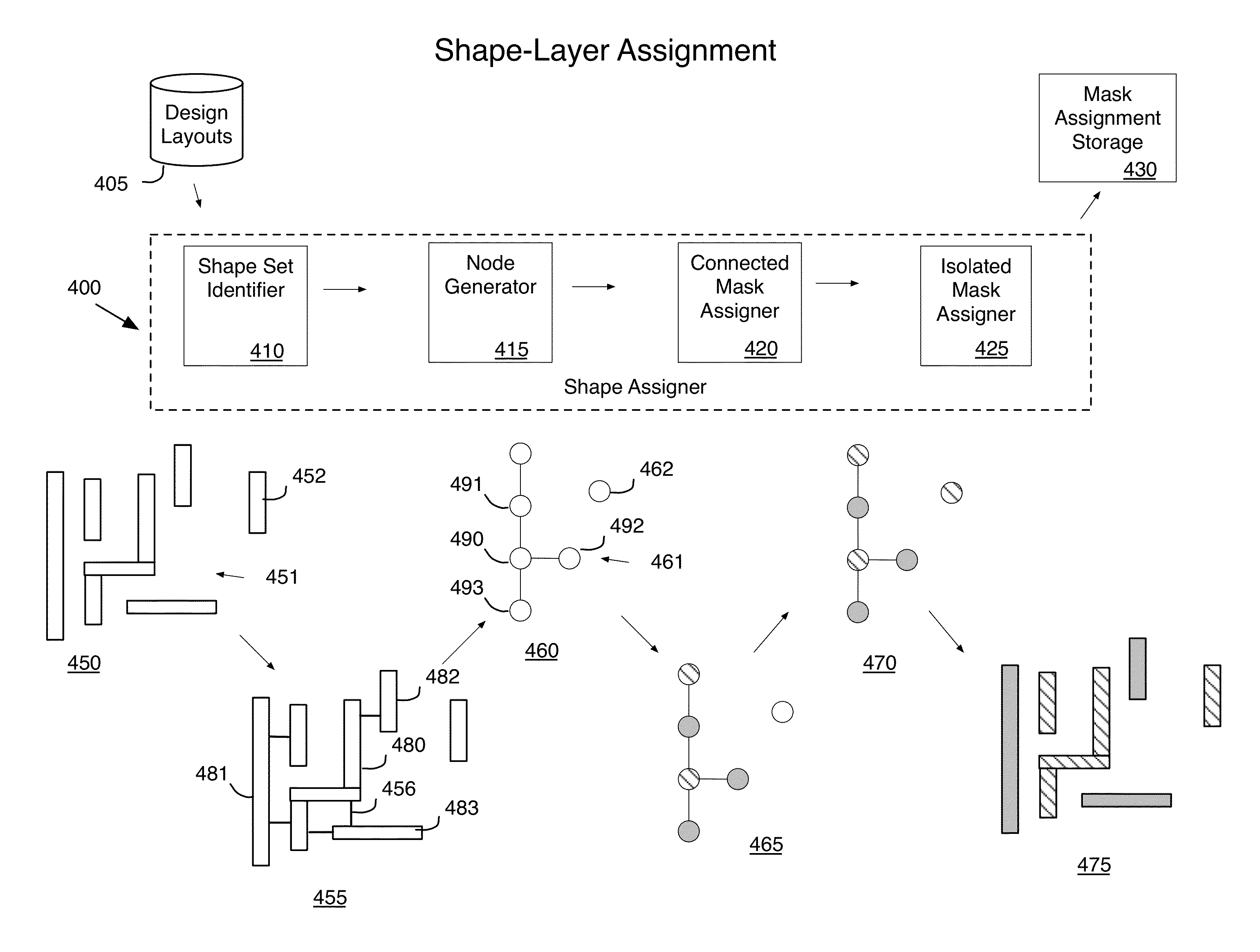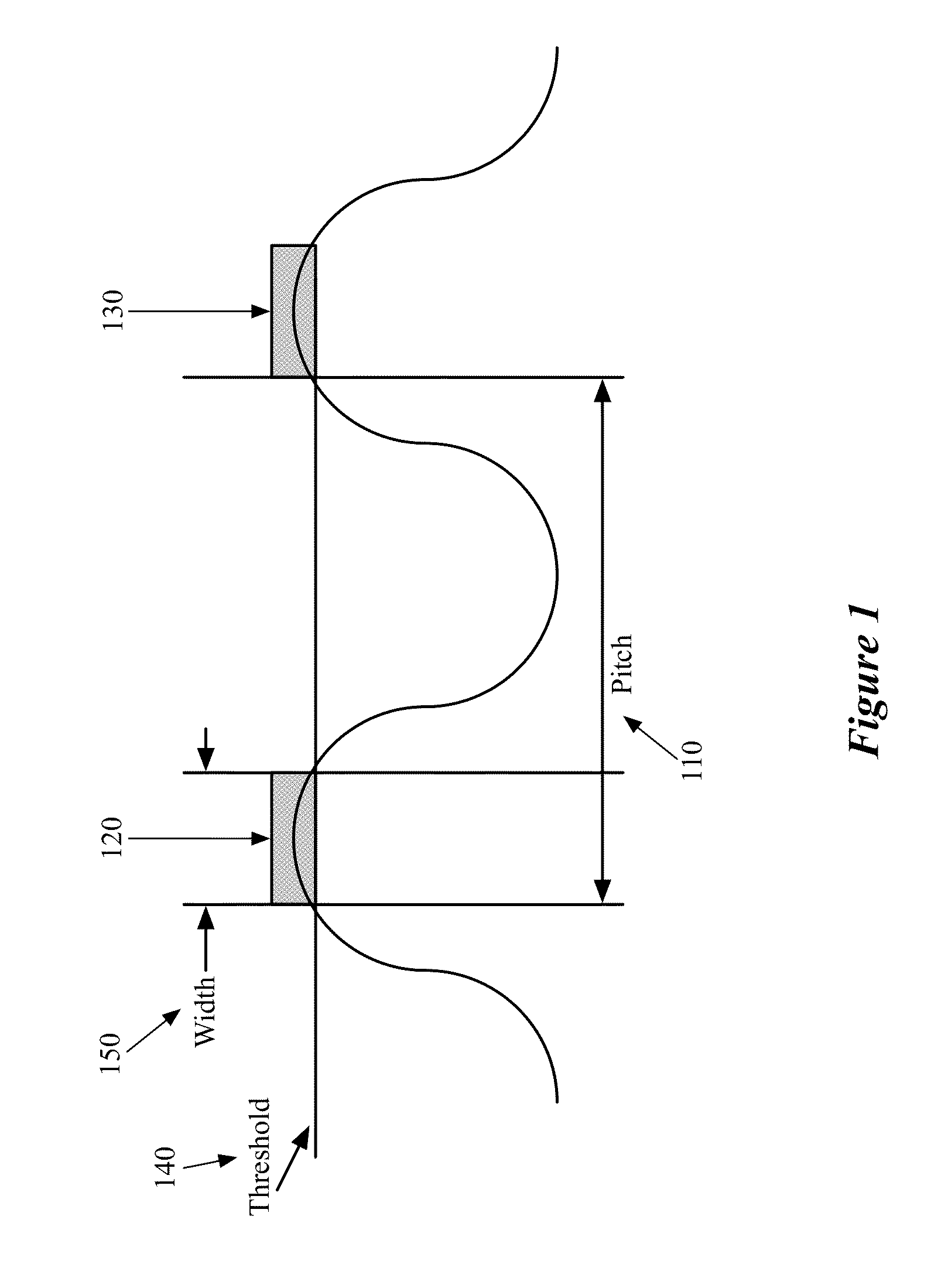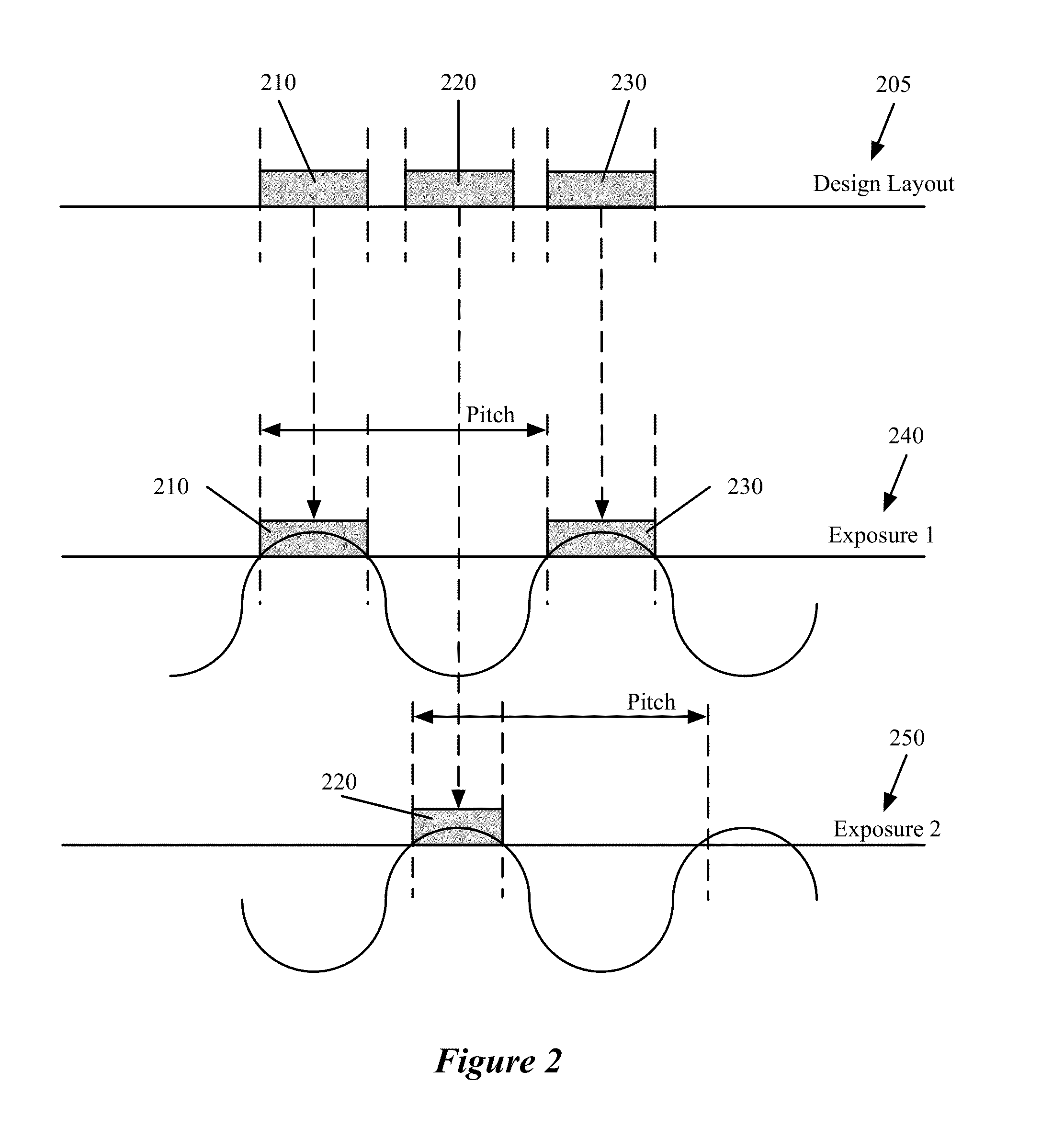Double patterning coloring with color balancing
a patterning and color balancing technology, applied in the field of double patterning coloring with color balancing, can solve the problems of limited light/optics band, limited photolithographic process effectiveness, and difficult to fabricate the geometries or shapes on a single lithographic mask, so as to reduce the overall density of the mask
- Summary
- Abstract
- Description
- Claims
- Application Information
AI Technical Summary
Benefits of technology
Problems solved by technology
Method used
Image
Examples
Embodiment Construction
[0032]In the following detailed description of the invention, numerous details, examples, and embodiments of the invention are set forth and described. However, it will be clear and apparent to one skilled in the art that the invention is not limited to the embodiments set forth and that the invention may be practiced without some of the specific details and examples discussed.
[0033]I. Mask Assignment
[0034]To use DPL technology, the layout designers need to follow a set of design rules or constraints while designing the layout such that the shapes on a single design layer can be successfully fabricated using two different masks. The EDA applications of some embodiments assign two colors (e.g., red and green) to the shapes to identify the two masks with which the shapes will be fabricated. Each shape on a design layer begins with its color unassigned. The EDA application of some embodiments assigns one of the two colors to each shape on the layer. Shapes that have been assigned to th...
PUM
 Login to View More
Login to View More Abstract
Description
Claims
Application Information
 Login to View More
Login to View More - R&D
- Intellectual Property
- Life Sciences
- Materials
- Tech Scout
- Unparalleled Data Quality
- Higher Quality Content
- 60% Fewer Hallucinations
Browse by: Latest US Patents, China's latest patents, Technical Efficacy Thesaurus, Application Domain, Technology Topic, Popular Technical Reports.
© 2025 PatSnap. All rights reserved.Legal|Privacy policy|Modern Slavery Act Transparency Statement|Sitemap|About US| Contact US: help@patsnap.com



